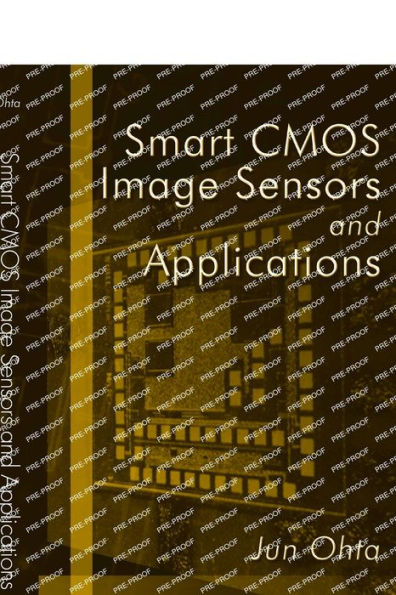Smart CMOS Image Sensors and Applications / Edition 1 available in Paperback

- ISBN-10:
- 1138746819
- ISBN-13:
- 9781138746817
- Pub. Date:
- 02/16/2023
- Publisher:
- Taylor & Francis
- ISBN-10:
- 1138746819
- ISBN-13:
- 9781138746817
- Pub. Date:
- 02/16/2023
- Publisher:
- Taylor & Francis

Paperback
Buy New
$79.95Overview
Features
• Covers the fundamentals and applications including smart materials, smart imaging, and various applications
• Includes comprehensive references
• Discusses a wide variety of applications of smart CMOS image sensors including biotechnology and optical wireless communication
• Revised and expanded to include the state of the art of smart image sensors

Product Details
| ISBN-13: | 9781138746817 |
|---|---|
| Publisher: | Taylor & Francis |
| Publication date: | 02/16/2023 |
| Series: | Optical Science and Engineering |
| Pages: | 266 |
| Product dimensions: | 6.12(w) x 9.19(h) x (d) |
About the Author
Table of Contents
Preface to the Second Edition ix
About the Author xiii
1 Introduction 1
1.1 A general overview 1
1.2 Brief history of CMOS image sensors 2
1.2.1 Competition with CCDs 3
1.2.2 Solid-state imagers with in-pixel amplification 4
1.2.3 Present CMOS image sensors 4
1.3 Brief history of smart CMOS image sensors 5
1.3.1 Vision chips 5
1.3.2 Advancement of CMOS technology and smart CMOS image sensors 7
1.3.3 Smart CMOS image sensors based on high performance CMOS image sensor technologies 7
1.4 Organization of the book 9
2 Fundamentals of CMOS image sensors 11
2.1 Introduction 11
2.2 Fundamentals of photo-detection 12
2.2.1 Absorption coefficient 12
2.2.2 Behavior of minority carriers 13
2.2.3 Sensitivity and quantum efficiency 15
2.3 Photo-detectors for smart CMOS image sensors 16
2.3.1 pn-junction photodiode 16
2.3.2 Photo-gate 25
2.3.3 Photo-transistor 26
2.3.4 Avalanche photodiode 26
2.3.5 Photo-conductive detector 28
2.4 Accumulation mode in PDs 29
2.4.1 Potential change in accumulation mode 30
2.4.2 Potential description 31
2.4.3 Behavior of photo-generated carriers in PD 32
2.5 Basic pixel structures 36
2.5.1 Passive pixel sensor 36
2.5.2 Active pixel sensor, 3T-APS 38
2.5.3 Active pixel sensor, 4T-APS 40
2.6 Sensor peripherals 43
2.6.1 Addressing 43
2.6.2 Readout circuits 45
2.6.3 Analog-to-digital converters 48
2.7 Basic sensor characteristics 50
2.7.1 Noise 50
2.7.2 Dynamic range 52
2.7.3 Speed 53
2.8 Color 54
2.8.1 On-chip color filter type 54
2.8.2 Three imagers type 56
2.8.3 Three light sources type 56
2.9 Comparison among pixel architectures 57
2.10 Comparison with CCDs 57
3 Smart structures and materials 61
3.1 Introduction 61
3.2 Smart pixels 62
3.2.1 Analog mode 62
3.2.2 Pulse modulation mode 67
3.2.3 Digital mode 76
3.3 Smart materials and structures 78
3.3.1 Silicon-on-insulator 79
3.3.2 Extending to NIR region 81
3.3.3 Backside illumination 84
3.3.4 3D integration 85
3.3.5 Smart structure for color detection 87
3.4 Dedicated pixel arrangement and optics for smart CMOS image sensors 92
3.4.1 Phase-difference detection auto focus 93
3.4.2 Hyper omni vision 93
3.4.3 Biologically inspired imagers 94
3.4.4 Light field camera 96
3.4.5 Polarimetric imaging 99
3.4.6 Lensless imaging 103
4 Smart imaging 107
4.1 Introduction 107
4.2 High sensitivity 108
4.2.1 Dark current reduction 108
4.2.2 Differential APS 110
4.2.3 High conversion gain pixel 111
4.2.4 SPAD 111
4.2.5 Column-parallel processing 111
4.3 High-speed 114
4.3.1 Overview 114
4.3.2 Global shutter 115
4.3.3 Column- and pixel-parallel processing for high speed imaging 117
4.3.4 Ultra-high-speed 118
4.4 Wide dynamic range 122
4.4.1 Overview 122
4.4.2 Nonlinear response 125
4.4.3 Linear response 126
4.5 Demodulation 130
4.5.1 Overview 130
4.5.2 Correlation 131
4.5.3 Method of two accumulation regions 133
4.6 Three-dimensional range finder 137
4.6.1 Overview 137
4.6.2 Time-of-flight 139
4.6.3 Triangulation 142
5 Applications 145
5.1 Introduction 145
5.2 Information and communication technology applications 145
5.2.1 Optical wireless communication 146
5.2.2 Optical ID tag 155
5.3 Chemical applications 160
5.3.1 Optical activity imaging 160
5.3.2 pH imaging sensor 163
5.4 Bioscience and Biotechnology applications 165
5.4.1 Attachment type 167
5.4.2 On-chip type 169
5.4.3 Implantation type 181
5.5 Medical applications 190
5.5.1 Capsule endoscope 190
5.5.2 Retinal prosthesis 192
Appendices 205
A Tables of constants 207
B Illuminance 209
C Human eye and CMOS image sensors 213
D Wavelength region in visible and infrared lights 217
E Fundamental characteristics of MOS capacitors 219
F Fundamental characteristics of MOSFET 221
G Optical format and resolution 225
H Intrinsic optical signal and in vivo window 227
References 229
Index 285
